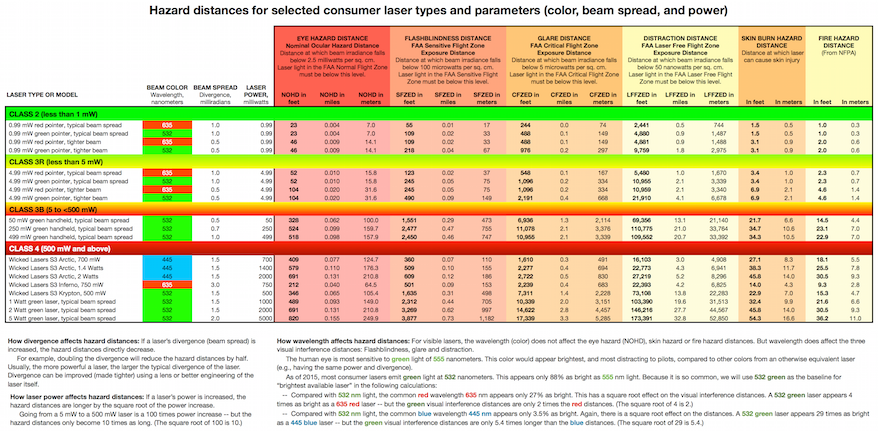Home
A comprehensive resource for safe and responsible laser use

Laser hazard distances chart
The chart below is for visible, continuous wave (CW) lasers. These are the most common lasers available to the general public, in the form of laser pointers and laser light show projectors.
The three key factors are:
- Output power — The brighter the beam (more power), the more hazardous the laser.
- Divergence — The tighter the beam (low beam spread), the more hazardous the laser.
- Color (wavelength) — For bright-light interference with vision, a green laser will appear brighter to the human eye than a red or blue laser of equivalent power and divergence.
Because the beam spreads out, beyond a given distance the laser beam is no longer considered a hazard.

The chart below shows these hazard distances for some typical consumer lasers.

Click chart for a larger view

Click chart for a larger view
For more information, see our online Laser Hazard Distance Calculator, our online Beam Diameter & Irradiance Calculator, and a page that explains the hazard distances and the equations used to find these distances.